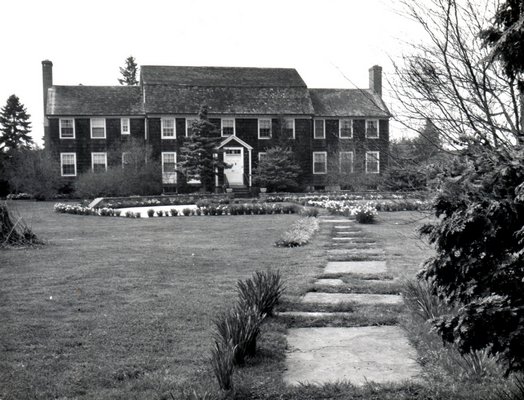
The East Hampton Library will be wrapping up its annual Tom Twomey lecture series with a discussion of two famous estates of the Gardiner family, which has remained a dominant family name with long lineages on Main Street.
After an introduction by Richard Barons, the former executive director of the East Hampton Historical Society, much of the conversation will center around Gardiner’s Island, the oldest family estate in the United States, led by Karl Grossman, a veteran journalist and the Suffolk Closeup columnist for a number of Long Island publications. In the 1970s, Mr. Grossman, who’s now a professor at SUNY College of Old Westbury, reported on the build-out of the East End and was featured in a documentary interviewing Robert David Lion Gardiner.
Chip Rae, a library board member and the series chairman, will lead the talk on the second estate at 95 Main Street—the notable home of Winthrop Gardiner, which is now home to the Ladies Village Improvement Society.
Chip Rae: The Gardiner family? There can’t be a more prominent family that has been involved in East Hampton for nearly four centuries. Gardiner’s Island is reasonably well-known. But not much lately because the folks that own it are very private. And the LVIS uses the Main Street estate as an institutional building, but in its day it was a remarkable country estate right smack in the middle of East Hampton.
When it was built in 1747, it was the largest and fanciest and the first Georgian house in East Hampton. So, it was a remarkable house in the day it was put up.
The Gardiner house was inherited by Winthrop Gardiner Sr. in 1924. He lived down the street in a very reasonable house over on James Lane, and was extremely land rich with some money from inheritances. Over the next 10 years, he took this ancient, ancient house and moved it back from the sidewalk, built an incredible sunken garden, restored some of the barn buildings for staff, built a six-car garage, and really lived in the center of the village as a country squire until he sold the house in 1950.
My talk is going to be about what happened to it. For instance, it was purchased by the Baker family who lived there for 30 years. And then it had a terrible fire in ’79, which burned off the back of the house. It went through a period of six or seven years where it became the most controversial topic in East Hampton Village. In the 1980s, Mayor Douglas Dayton wanted to move the house forward and make it a town hall, building a parking lot over most of the property. He was effectively ousted and not re-elected.
The East Hampton Village Preservation Society was formed as a result of the controversy in moving this house. And in 1987, the LVIS stepped in and bought the house and renovated it. It was in bad shape.
In the last year, they had Ben Krupinski’s firm—one of the last things Ben donated before he passed away—redo the interior and polish it up. It really is spectacular, again.
The sunken garden—they became very popular in the 1920s, particularly out here on large estates because the wind is so bad. A sunken garden would be six, seven feet below the grade of the land and the plantings would not get wind whipped, and created a warmer environment for them. There are a lot of things you can do with a sunken garden like steps and water features. There’s an amazing bench that is still there.
Winthrop added two wings to the house by 1927, a huge living room and master bedroom that opened on to the sunken garden with a stone terrace. And this was a pretty spectacular thing. When his daughter was married there in the ’30s, the wedding was at St. Luke’s and they floored over the sunken garden for a dance floor for 150 people.
The house was massively altered by Joseph Greenleaf Thorpe, the local darling architect of the summer colony. He radically changed the inside of the house but it became a really substantial house in the center of the village. When similar people were building country houses on Further Lane, for some reason Winthrop Gardiner wanted to live in the center of town. Of course, everyone wants to live there today, but he was just 90 years ahead of everyone else.
So, here’s a house that’s from the 1740s, a residence up until 1979 and the fire, and now it is entering a new century as an institutional use. It is incredibly relevant and anchor to the center of the village.
The lecture begins at 6 p.m. on Saturday, October 13, at the East Hampton Library. Reservations can be made at tomtwomeyseries.org or by calling 631-324-0222.